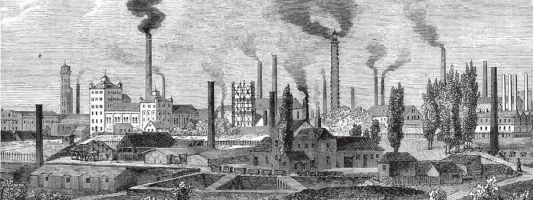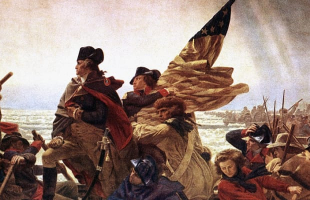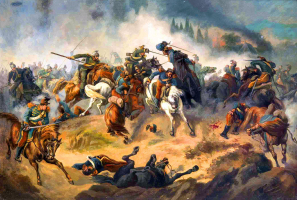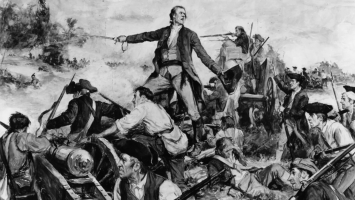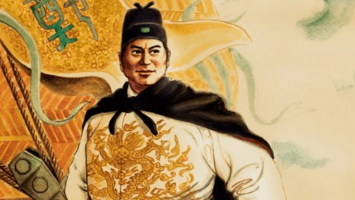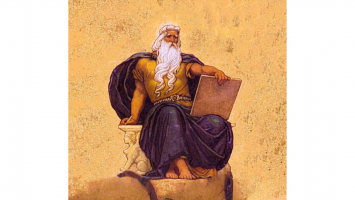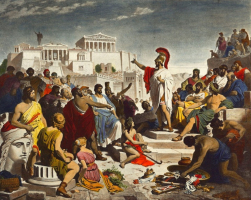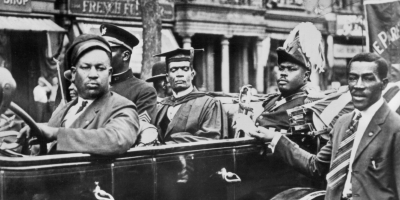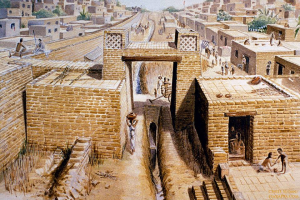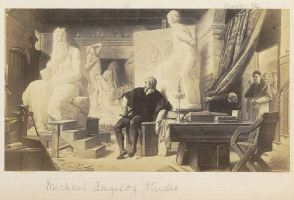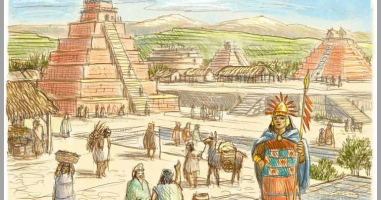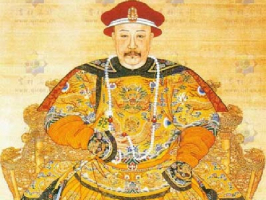Top 10 Interesting Facts About The French Revolution
The French Revolution was a period of significant political and societal change in France that began in 1789 with the founding of the Estates General and ended ... read more...in November 1799 with the formation of the French Consulate. In this article, Toplist will focus on facts about this pivotal event. And here are some interesting facts about the French Revolution.
-
The first interesting fact about the French Revolution is related to the cause of it. France was in the midst of a financial crisis when the revolution began. This was primarily due to France's involvement in a series of costly wars. Food and consumer goods demand increased as the population grew. Moreover, severe weather and bad harvests caused the price of flour to skyrocket, leading the price of bread to increase as well. Bread was the most common food consumed by most French inhabitants, and it was believed that the working class of France spent up to 90% of their daily income on bread.
From around 1730, the discovery of new gold mines in Brazil resulted in a general surge in prices across the West, indicating a successful economic condition. This development slowed after 1770, and economic crises, which sparked panic and even revolution, became more common. Furthermore, the financial crisis of France was exacerbated by the royal family's lavish spending on luxuries. France was split into three Estates: the clergy, the nobility, and the remainder of the population, which accounted for roughly 98 percent of the French population. Because the top two estates enjoyed several benefits, including tax exemptions, the Third Estate bore the brunt of the financial crisis, leaving the common people hungry, unemployed, and furious.
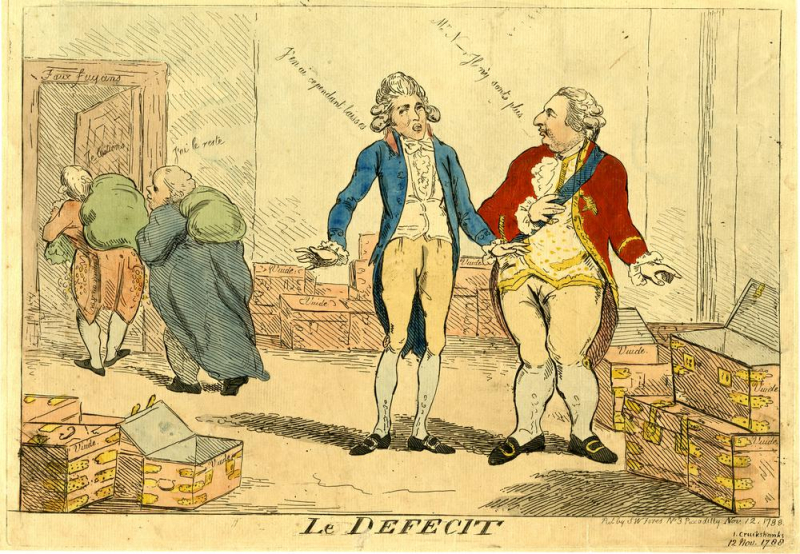
Photo: British Museum 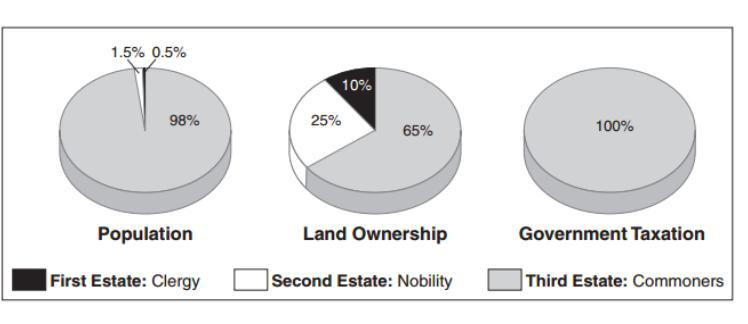
Photo: Brainly.com -
On May 5, 1789, the Estates-General gathered in Versailles. They were instantly split on vote by head, giving the Third Estate an edge, or by estate, allowing the two privileged orders of the realm to outvote the third. The intense debate over this legal issue finally prompted the Third Estate representatives to declare themselves the National Assembly on June 17. Many parish priests supported them, outnumbering the aristocratic upper clergy among the church's deputies. The Third Estate vowed not to separate until they had handed France a constitution on June 20, 1789, in what is known as the Tennis Court Oath. They established the National Constituent Assembly on July 9th. Soldiers, primarily foreign mercenaries, began to arrive in Paris around this period.
Despite being happy by the recent loss of royal power, Parisians became alarmed when rumors of a military coup began to emerge. On July 14, rioters stormed the Bastille fortress in an attempt to seize gunpowder and guns; many believe this incident, which is now marked as a national holiday in France, to be the beginning of the French Revolution. They retaliated on July 14 by attacking the Bastille, which was overrun in a matter of hours. The Bastille served as a jail, but it also held gunpowder and weaponry. The countryside was immediately engulfed by a surge of revolutionary enthusiasm and widespread hysteria. Peasants plundered and destroyed the homes of tax collectors, landlords, and the seigniorial elite in a revolt against years of exploitation.
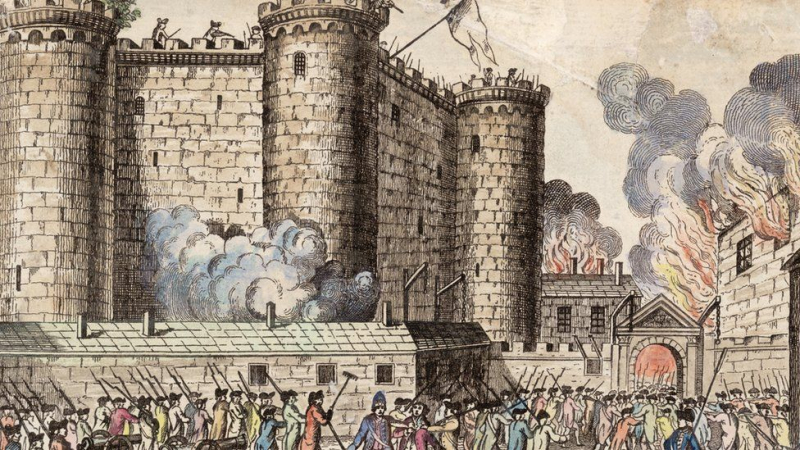
Photo: BBC News 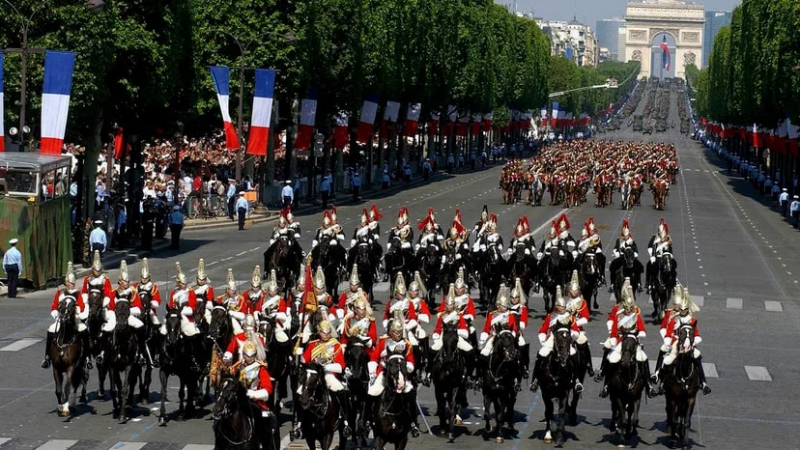
Photo: howstuffworks -
Another interesting fact about the French Revolution is cockades worn by the revolutionaires is the origin of the tricolor flag. The Bastille, a symbol of royal tyranny, was stormed by a throng of Parisians on July 14, 1789. The monarch had to capitulate once more; when he visited Paris, he wore the tricolor cockade to signify his acknowledgement of the people's authority. The Paris militia donned a cockade of blue and red during the storming of the Bastille. The traditional colors of France were blue and red, with blue being associated with Saint Martin and red with Saint Denis. White was the "old French color," and the original tricolor cockade was created by pinning the blue-and-red cockade of Paris onto the white cockade. The National Guard, which followed the militia, adopted this cockade as part of their uniform.
These tricolor cockades inspired the colors and design of the French Tricolor Flag. The history of the country's aristocratic and revolutionary history is firmly ingrained in the symbolism of the flag's colors. In pre-revolutionary France, the flag had a white background with a blue shield and a gold Fleur-de-lys representing the royal coat of arms. Following the French Revolution, however, the country's authorities desired a simpler design that reflected the nation's new beliefs, and the French Tricolor was selected. The French Tricolor Flag became one of the most influential flags in history, with many other countries in Europe and the rest of the globe copying its three-color style.
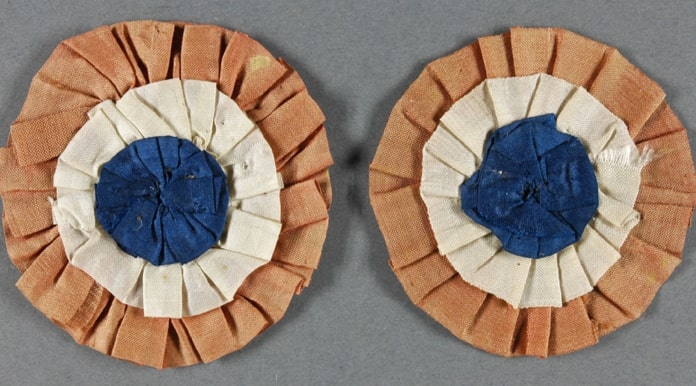
Photo: SedumiciByPamori 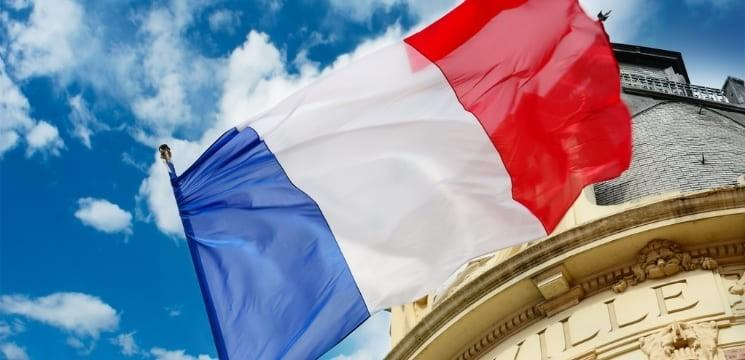
Photo: Learn French In France -
Externally, other European kingdoms saw Revolutionary France as a threat, and they viewed it with both fear and fury. The French Revolutionary Wars, a series of military confrontations that lasted from 1792 to 1802, emerged as a result of this. They put France's Republic against the United Kingdom, Austria, and a number of other monarchs. Despite a series of setbacks, France, under Napoleon Bonaparte's leadership, was able to capture a wide range of regions by 1802. The success of the French Revolutionary Wars allowed revolutionary concepts to spread throughout much of Europe. Internally, the Directory has had executive power since 1795. It became mired in corruption, political strife, and financial difficulties.
The Coup of 18–19 Brumaire (November 9–10, 1799) destroyed the Directory's form of governance in France and replaced it with the Consulate, paving the way for Napoleon Bonaparte's autocracy. The incident is frequently regarded as the end of the French Revolution.
On November 9, 1799, in Paris, the legislative Council of Ancients, led by Sieyès, voted to have both the Ancients and the lower house, the Council of Five Hundred, meet the next day in the palace at Saint-Cloud, ostensibly to protect the councils from a purported "Jacobin plot" in Paris, but in reality to put the councils in a convenient location away from the city and under the threat of Bonaparte's troops.
Bonaparte blundered through a speech before the Ancients the next day, 19 Brumaire, and was afterwards confronted with a storm of insults in the meeting site of the Five Hundred, whose members, hearing whispers and seeing troops all around, began to perceive the true conspiracy that was building. Bonaparte fled the hall, but Sieyès, Lucien Bonaparte, and Joachim Murat rallied the troops, dissolving the Five Hundred, and forcing the Ancients to decree the end of the Directory (and itself) and the establishment of a new consular government led by First Consul Bonaparte and assisted by consuls Sieyès and Roger Duclos.
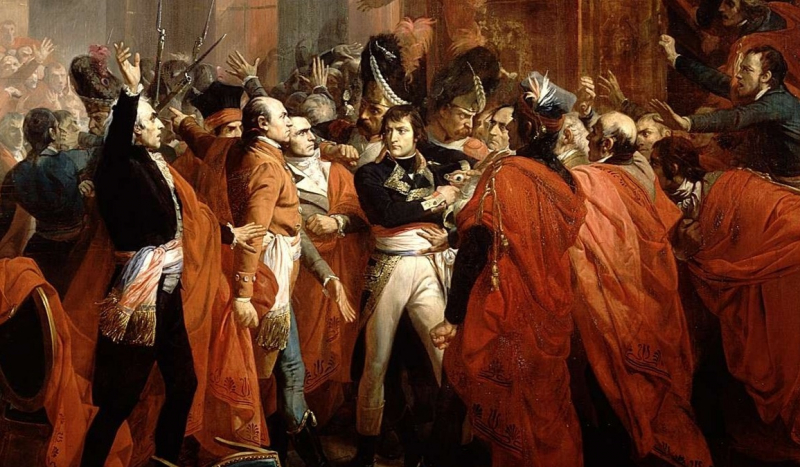
Photo: History On This Day 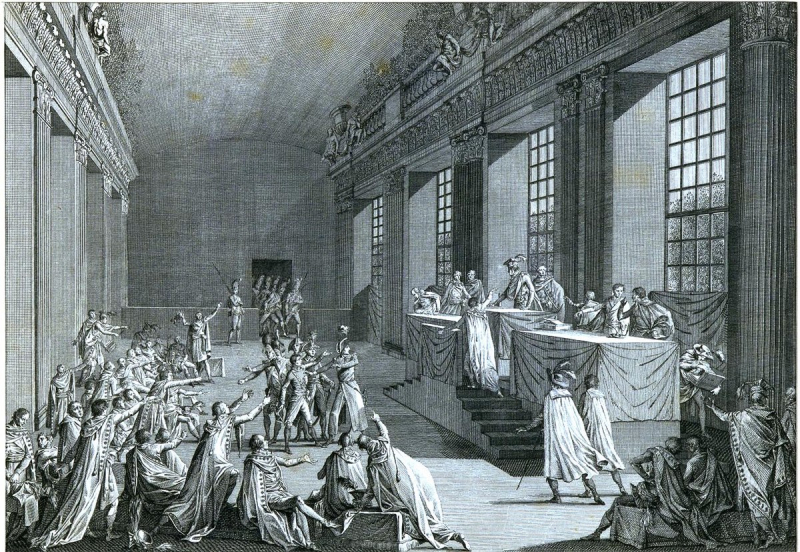
Photo: Wikimedia Commons -
The Committee of Public Safety was established by the National Convention, the first administration of the French Revolution, in March 1793. The committee's mission was to defend the newly formed country from foreign invasions and domestic unrest. The committee, which consisted of 12 members, the most important of whom was Maximilien Robespierre, became the de facto executive government in France during the Reign of Terror, which lasted from September 5, 1793, to July 28, 1794. During the Reign of Terror, an estimated 40,000 individuals were executed in the guise of purging the country of revolutionaries. The guillotine was used to carry out the execution, and it was dubbed the National Razor and Madame La Guillotine.
The killing machine's history is fascinating. Doctor Joseph Ignace Guillotin, an anti-death penalty crusader, invented the guillotine, which became internationally famous and was used until 1977. In revolutionary France, children played with guillotine toys, restaurants competed for space near execution sites, and executioners became prominent celebrities who influenced fashion trends.
The public's reception to it was originally underwhelming. The efficiency of the guillotine diminished the amusement of a public execution for a crowd used to long, painful, and theatrical executions. This was reassuring to opponents of the death penalty, who believed that executions would no longer be a source of entertainment. However, due to the large number of deaths that a guillotine could handle, public guillotine killings swiftly became high art. To many who supported the Revolution, it was also considered as the ultimate symbol of justice. People went to the Place de la Revolution to sing, write poems, and make jokes about the machine. That's the fifth interesting fact about the French Revolution.
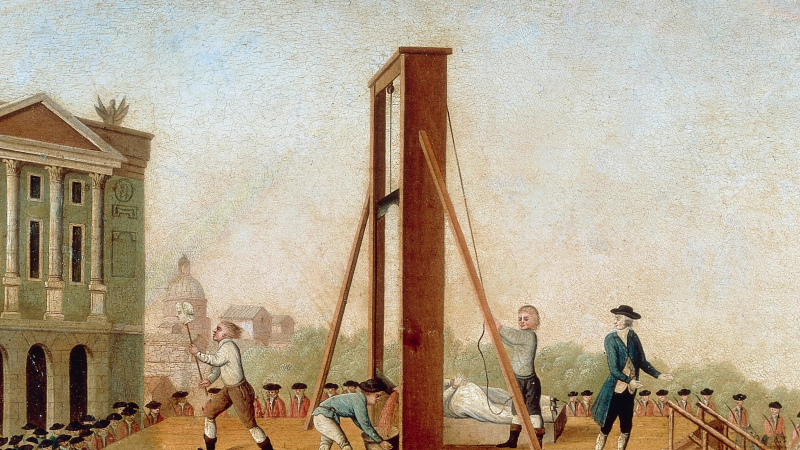
Photo: Teen Vogue 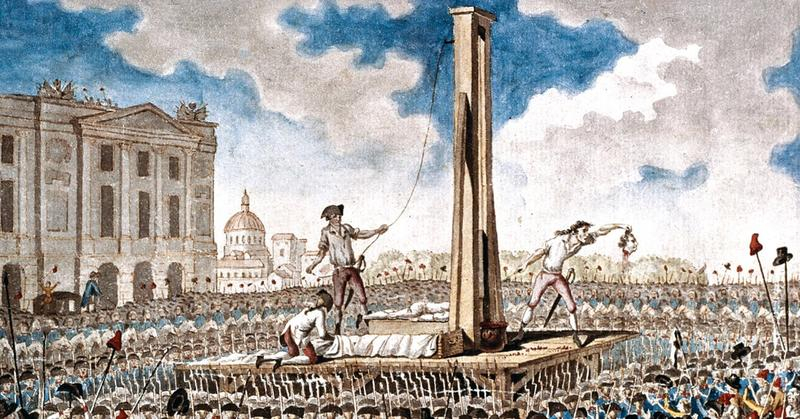
Photo: History Daily -
On the 5th of October 1789, a large crowd of demonstrators, largely women, gathered at Parisian marketplaces to dispute the high cost of bread. The women marched from Paris to Versailles after receiving disappointing responses from city officials. They stormed the palace and demanded that the monarch "live among the people," killing many guards in the process.
The royal family was obliged to return to Paris after the Women's March on Versailles. They were held as virtual captives in the Tuileries, the king's official home. Louis XVI became emotionally immobilized, relying on the queen to make the most crucial decisions. The royal family attempted to flee to Austria on the night of June 20, 1791, dressed as servants with their servants dressed as nobility. On June 21, 1791, at her request, Louis and his family embarked on a disastrous attempt to flee the capital to the eastern boundary. The National Guards were assigned to "guard" the royal family in Paris, thus legitimizing the National Assembly.
The royal family's flight was stopped after Jean-Baptiste Drouet, the postmaster of Sainte-Menehould, recognized the king from his photograph, owing to the cumulative effect of a series of faults that, on their own, would not have resulted in the mission's failure. The monarch and his family were apprehended 31 miles from their final goal, the heavily guarded royalist castle of Montmédy, in the town of Varennes.
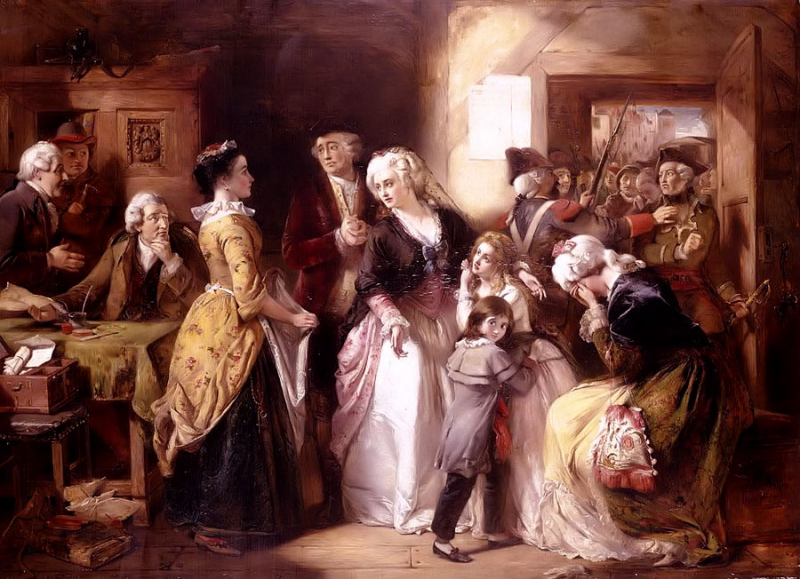
Photo: Wikipedia 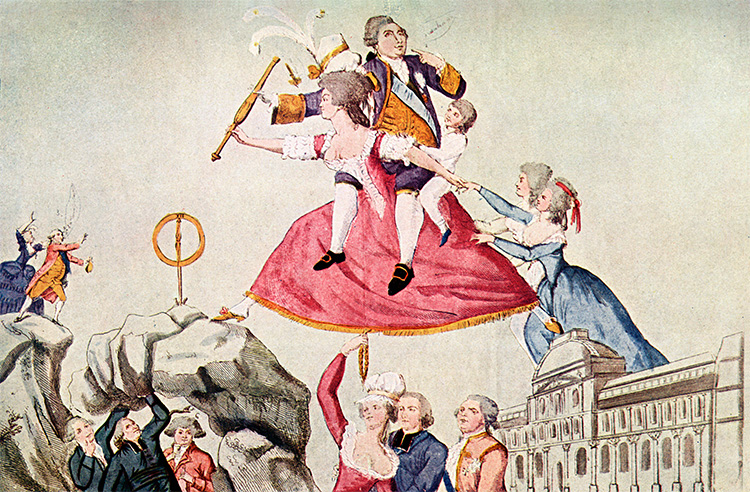
Photo: History Today -
The King and Queen were beheaded is the next interesting fact about the French Revolution. The public, which had already turned against King Louis XVI because of his planned departure to Austria, now saw him as a traitor who desired foreign intervention to restore the monarchy. Marie-Antoinette, his wife, was likewise unpopular with the populace. When Parisians came to Versailles to plead for bread, it was said that she replied, "If they can't have bread, let them have cake." The Queen never said anything about this, despite the fact that it demonstrated complete contempt for the common people. A throng of Parisians besieged the Tuileries, Louis XVI's official residence, on June 20, 1792. The Legislative Assembly put the King and Queen under house arrest to prevent additional unrest. On August 10, King Louis XVI was accused of treason and convicted.
Marie-Antoinette was imprisoned in Paris for the rest of her life. Along with the queen, the princess de Lamballe, who stayed faithful to her throughout the Revolution, was arrested. Lamballe refused to swear an oath against the monarchy, and on September 3, 1792, she was handed over to a crowd in Paris, who chopped off her head and paraded it outside Marie-windows Antoinette's on a pike. The National Convention ordered Louis XVI's execution in January 1793, and the queen was placed in solitary imprisonment in the Conciergerie in August. On October 14, 1793, she was hauled before the Revolutionary tribunal and guillotined two days later.
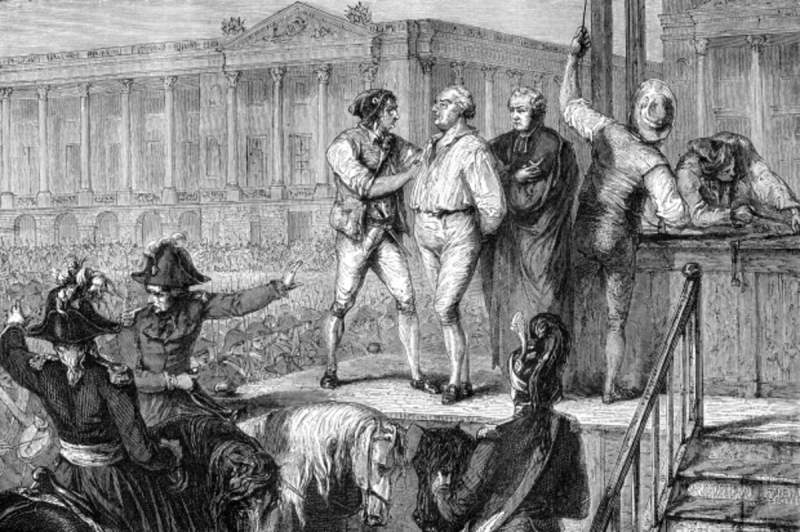
Photo: Biography 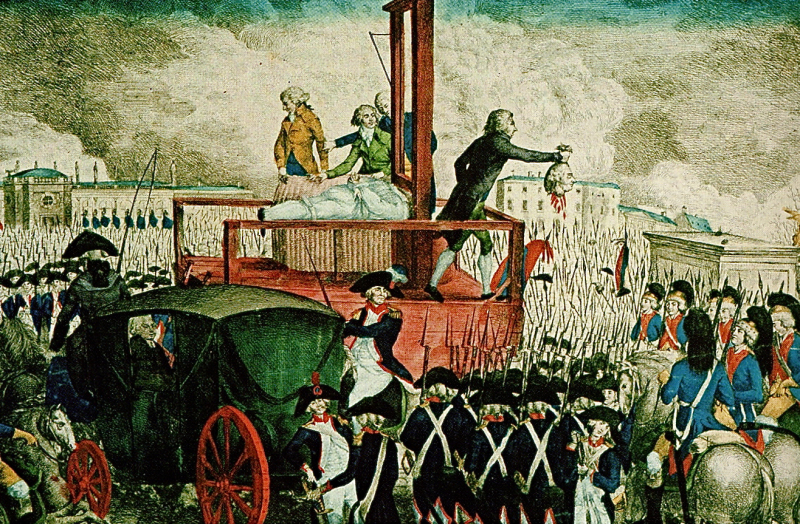
Photo: Robin Engelman -
The left–right political spectrum is a classification system for political perspectives associated with left–right politics, ideologies, and parties, with a focus on concerns of social equality and hierarchy. There are centrists or moderates who are not strongly aligned with either extreme of the spectrum, in addition to positions on the left and right. Some people consider the left-right political spectrum to be unnecessarily simplistic, and therefore reject this approach of categorizing political positions in favor of another system, such as a two-dimensional rather than one-dimensional description.
During the French Revolution of 1789, when members of the National Assembly were divided into supporters of the king to the president's right and supporters of the revolution to his left, the phrases "left" and "right" were coined. The divides continued when the National Assembly was replaced in 1791 by a Legislative Assembly made up completely of new members. The "innovators" sat on the left, the "moderates" in the middle, and the "conscientious defenders of the constitution" on the right, where the Ancien Régime's defenders had previously gathered.
The terms "left" and "right" did not refer to political ideology per se, but rather to legislative sitting. The "democratic socialists" and "reactionaries," who used red and white flags to signify their party affiliation, were the primary opposing camps after 1848. The phrases were used by political parties with the foundation of the Third Republic in 1871: Republican Left, Center Right, and Center Left (1871), Extreme Left (1876), and Radical Left (1876). (1881). The beliefs of the Radical Left were really closer to the beliefs of the Center Left than the beliefs of the Extreme Left.
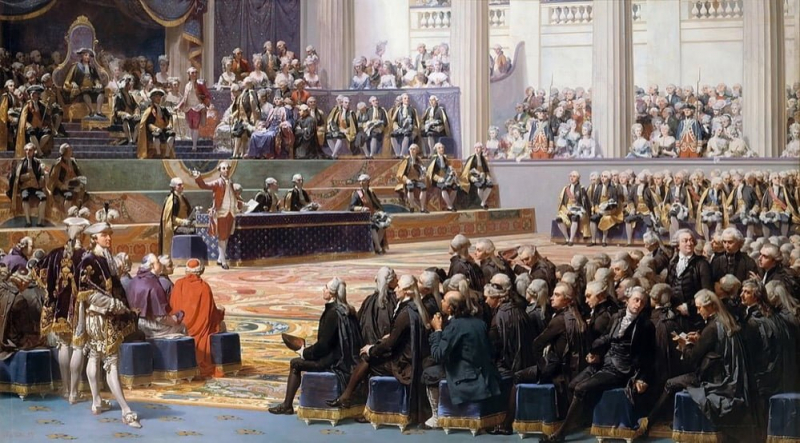
Photo: La Brujula Verde 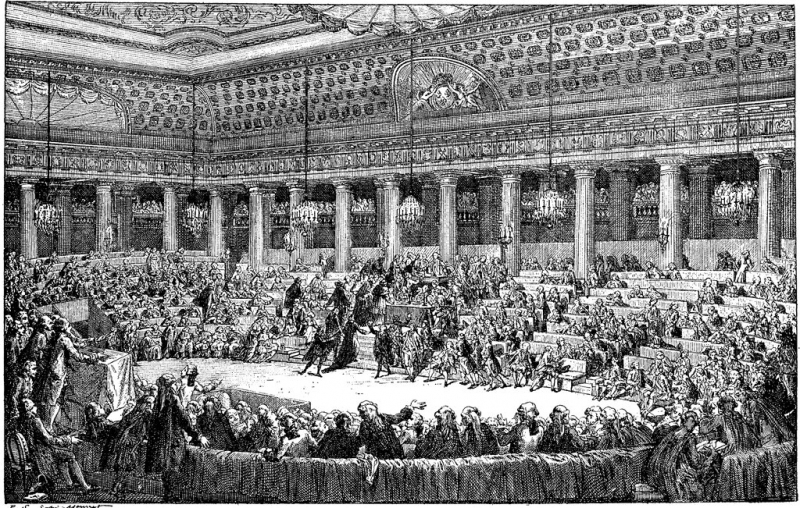
Photo: Sutori -
Claude-Joseph Rouget de Lisle, a captain of the engineers and amateur musician, created La Marseillaise in one night during the French Revolution (April 24, 1792) during the French Revolution. What an interesting fact about the French Revolution! The Marseillaise is the first example of the anthemic form known as the "European march." Its emotive melody and lyrics have led to it being widely used as a revolutionary anthem.
P.F. Dietrich, the mayor of Strasbourg, highlighted the necessity for a marching song for the French troops after France declared war on Austria on April 20, 1792. Rouget de Lisle's response to this request was "La Marseillaise." The hymn was originally known as "Chant de guerre de l'armée du Rhin" ("War Song of the Army of the Rhine"), but it was shortened to "La Marseillaise" due to its popularity among Marseille volunteer army battalions.
When the lively and magnificent hymn was sung at Revolutionary public events, it left a powerful impression. In a decree issued on July 14, 1795, the Convention designated it as the French national anthem. Because of its revolutionary associations, "La Marseillaise" was outlawed by Napoleon throughout his empire and by Louis XVIII during the Second Restoration (1815). It was legalized following the July Revolution of 1830, but Napoleon III outlawed it again, and it was not revived until 1879.
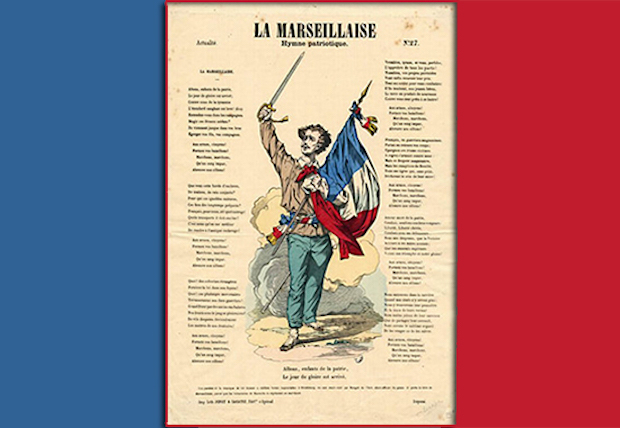
Photo: Cle France 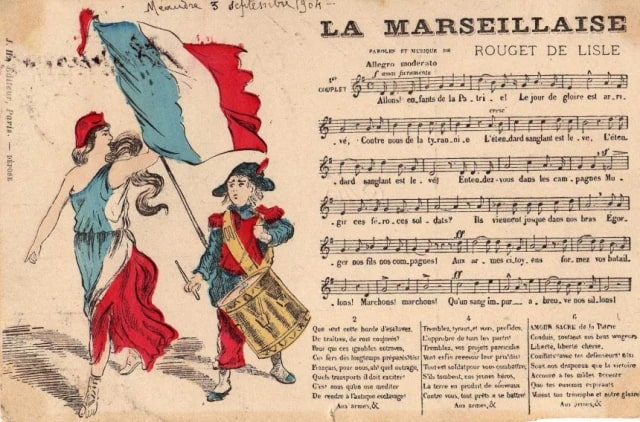
Photo: FranceSays -
The French Revolution was a watershed event in modern European history. The French population demolished and remade their country's political landscape during this time, demolishing centuries-old institutions like absolute monarchy and the feudal system. In France and its colonies, the French Revolution was a period of social and political upheaval. The Monarchy was overthrown, and the decline of absolute monarchies in other regions of Europe was affected by liberal and radical views.
The French Revolution had a huge and far-reaching impact on the world, arguably more than any other revolution. The end of feudalism, a decrease in the prominence of religion, the demolition of oligarchies, economic growth in Europe, the birth of Modern Nationalism, and the spread of Liberalism are some of the consequences. Most notably, the Revolution changed the trajectory of modern history, causing absolute monarchy to fall out of favor and be replaced by republics and liberal democracies around the world. It marked the beginning of the Age of Revolutions, a time marked by a slew of key revolutionary movements across Europe and the Americas.
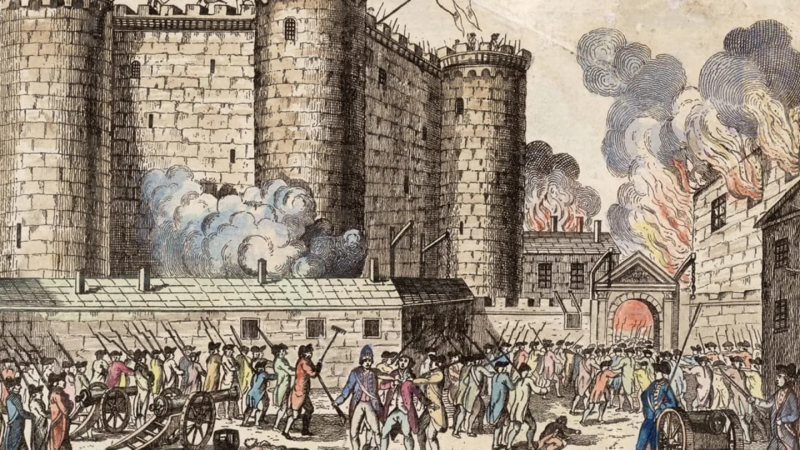
Photo: Mental Floss 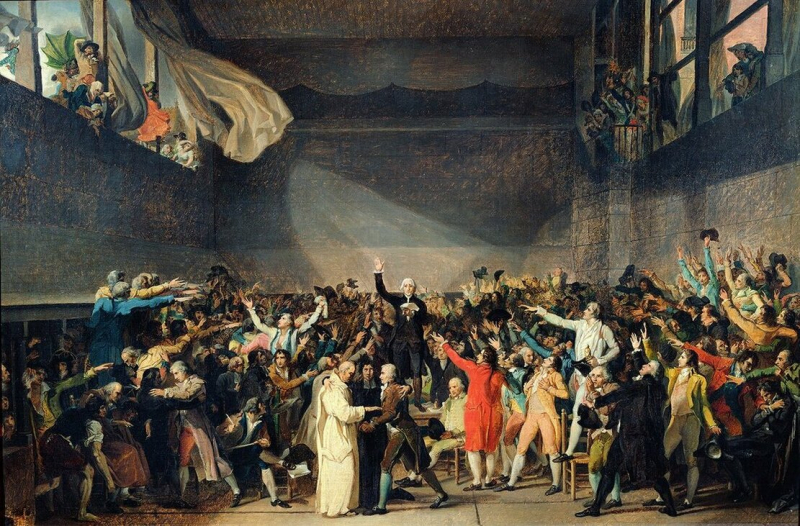
Photo: dachpain.weebly.com












